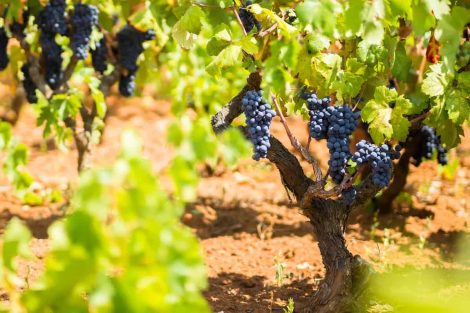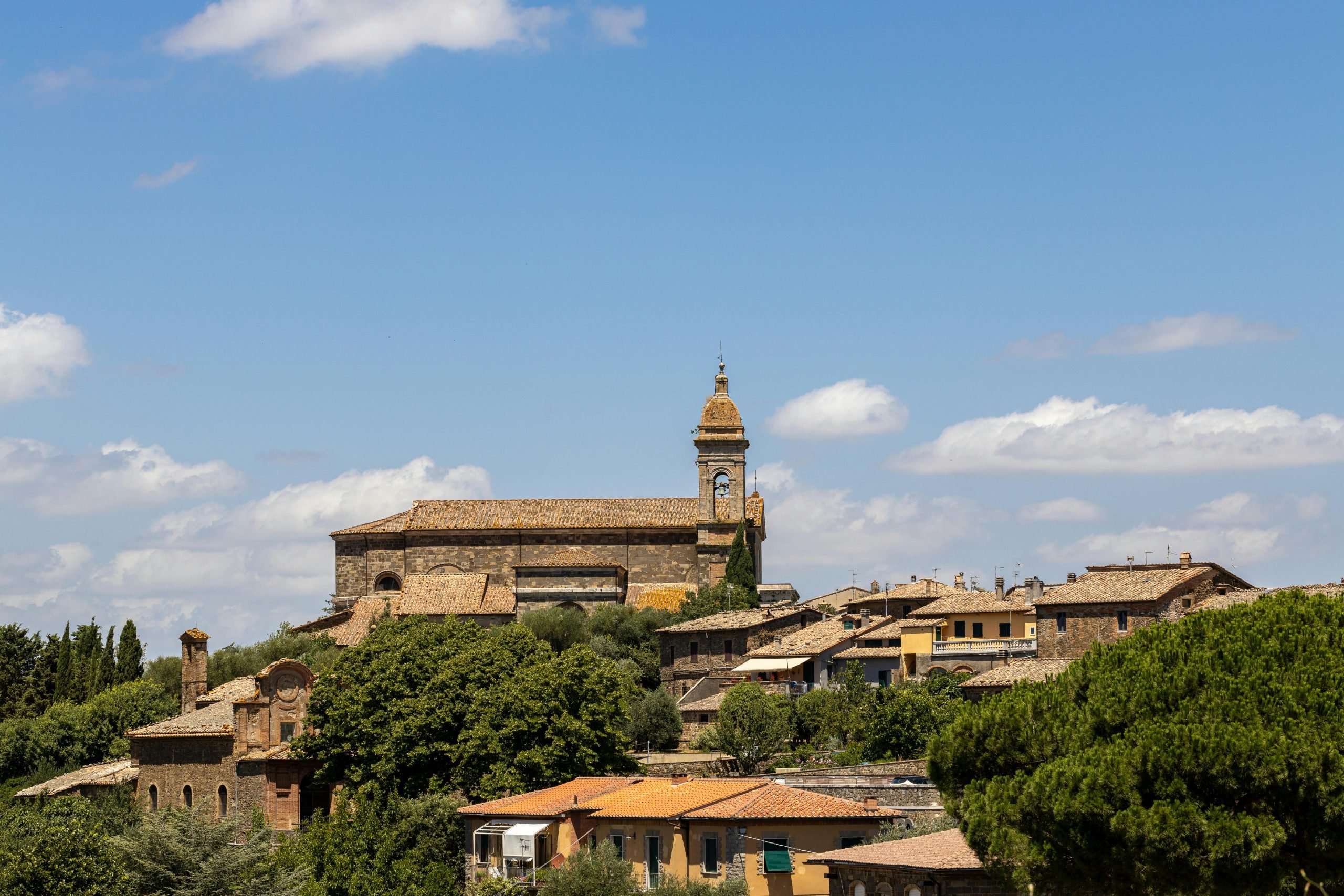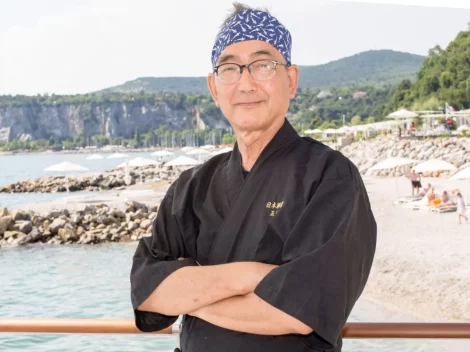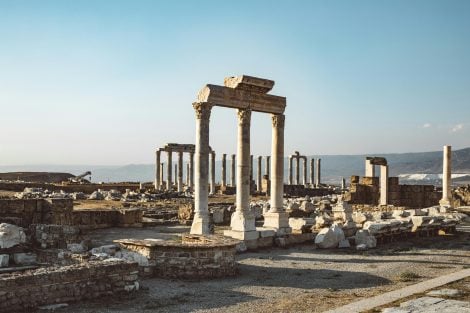Rosé is not a product category but a different interpretation of a territory. We are convinced that in recent years, the growth of rosé wines has been impressive. Finally, we find rosés produced with the best available grapes, with many wineries deciding to focus strongly on this variation, offering important and well-articulated ranges of rosés. And the market is responding in an exciting way, both in Italy and abroad.
Here we focus on some of the best expressions of rosé wines from Puglia, obtained in purity or in blends from the main native grape varieties and beyond, starting from negroamaro, which plays a leading role since it is present in a considerable quantity in 80% of the reds and rosés of the region. Its origins are ancient: it seems to have arrived in Puglia with the migrations of Greek settlers in antiquity. Abundantly produced and consistent, it adapts very well to arid soils and hot climates. It yields a wine of intense ruby-red color, full-bodied, round, with a pronounced bitter aftertaste; together with black malvasia, when vinified into rosé, it produces a fine, fruity, and lively wine with a delicate aroma.

Regarding the name, various hypotheses have been made: some suggest that the adjective "amaro," sometimes written separately from "negro," indicates the power of the wine and its tannic density; others derive it from ancient Greek "amauròs," meaning "dark, black," as if to say "black black," describing the impenetrable appearance of the resulting wine. There are also other hypotheses, but the certain fact is that the name of the grape variety is mentioned in writing for the first time only in the nineteenth century.
The grape variety was once widespread in various areas of Southern Italy: it was cultivated in Campania, near Pozzuoli, in the countryside of Barletta, and Bari: currently, however, it is the provinces of Brindisi, Lecce, and Taranto that host negroamaro, which is vinified in purity, but often together with primitivo, which is the other main grape variety of the rosé wines we propose.
Among the native Apulian grape varieties, primitivo boasts the largest vineyard area. The name would derive from its early ripening. It is cultivated in much of the region, but its preferred territories are certainly the limestone hills of Gioia del Colle and the provinces of Taranto and Brindisi, where it gives life to the Doc Primitivo di Manduria.

Over time, the stylistic perspective of Primitivo has changed: we have moved from very warm wines, often with very impactful residual sugars, to obviously Mediterranean-style wines, but where the fruit manages to remain intact and where, in the best cases, the sip is punctuated by good acidity.
The beauty is that to find great labels among these wines, you don't have to spend a fortune. A recommendation: don't hesitate to keep these wines still in the cellar for another 3-4 years; you will be pleasantly surprised because even rosé wines, at least the more structured ones, age well and improve over time.
The best rosés from Puglia made from negroamaro, primitivo, and more
The following list does not claim to be exhaustive but aims to be a guide to discover a type of wine that is still little known and appreciated compared to what it deserves. As we said, the main grape varieties are negroamaro and primitivo, but there are also other blends (from nero di troia to aglianico to bombino nero) that can produce rosés of remarkable quality. Some have received the Tre Bicchieri, the highest rating in the Gambero Rosso 2024 Italian Wine Guide, others have reached the final, with the Due Bicchieri Rossi, and others are still very good, evaluated with the Due Bicchieri.
The Five Roses 79th Anniversary '22 (80% negroamaro and 20% black malvasia) offers aromas of yellow peach, sweet citrus, and jasmine on the nose, while on the palate, it is savory, with beautiful freshness, and a taut, juicy, and appealing finish, without concessions to excessive sweetness. A historic standard-bearer of Salento's winemaking, Leone de Castris relies on several estates ranging from Salento to the Murge, with a significant presence of bush-trained Apulian vines and the presence of many grape varieties, both native and international. The wide range of wines produced, about forty labels, is technically well-executed and of remarkable aromatic clarity. The Salice Salentino in various proposed types stands out for its typicality and intensity.
Delightful is the EstRosa '22 (85% primitivo, 15% aglianico), which ranks among the best wines of the region, not only among rosés but overall. Fresh, fragrant, balanced in its floral notes, wild red berries, and Mediterranean scrub, it highlights a juicy, long, and greatly pleasant finish. Pietraventosa, the winery of Marianna Annio and Raffaele Leo, has established itself as one of the most interesting realities in the Gioia del Colle area. The company's vineyards, located at about 380 meters above sea level in a windy area, are situated on calcareous and clayey soils, rich in skeleton and mineral salts, and include about one hectare of old bush-trained vines about 70 years old. The wines offered are modern, designed to express the characteristics of the territory to the fullest, with fascinating expressiveness.
Excellent is the Kreos '22, Negroamaro Rosato with aromas of yellow peach and black cherry and a juicy palate with a dry and pleasant finish. The Memmo family has managed Castello Monaci for four generations. There are three company estates: Masseria Flaminio in the Brindisi area, mainly white grapes on sandy soils near the sea, while in the province of Lecce, primitivo is mainly grown at Masseria Vittorio in Trepuzzi, located on ferrous red soil, and primitivo, black malvasia, and negroamaro in the Salice Salentino estate, situated on clayey and tuffaceous soil. The proposed wines are modern in style, with a particular focus on pleasantness and fruit richness.
Excellent is the Metodo Classico Brut Ancestrale Rosé '18 by Tenute Chiaromonte, fresh and lively, with tones of red fruits, orange zest, and bread crust. Tenute Chiaromonte, owned by Nicola Chiaromonte and Paolo Montanaro, boasts vineyards located at over 300 meters above sea level on the mineral-rich karst soils of the Murge, which include more than ten hectares of bush-trained primitivo vines over 60 years old. Alongside primitivo, there are also moscato, fiano, chardonnay, and pinot nero.
The Gelso Rosa 2022 (100% uva di Troia) is one of the wines proposed this year by Podere 29, which has turned twenty. In 2003, Giuseppe Marrano decided to plant a vineyard on land located about 10 kilometers from the salt flats of Margherita di Savoia, where the marine influence is evidently very important. The present grape varieties are mainly autochthonous, from nero di Troia to susumaniello to primitivo. The proposed wines are modern in style, with a pronounced Mediterranean character, with particular attention to fruit richness and aromatic clarity.
The Rohesia Negroamaro Rosato 2022 is one of the wines presented this year by Cantele, a company that, in addition to its own vineyards located between Guagnano, Montemesola, and San Pietro Vernotico on deep calcareous-clayey soils with medium-high permeability, predominated by red soils, also relies on a "négoce" activity that relies on about 150 hectares of some trusted contributors followed by the company staff throughout the year. The cultivated grape varieties, in addition to the historic chardonnay, are mainly those of tradition, such as negroamaro, primitivo, or susumaniello, for wines with a modern style that aim to combine typicity and drinkability.
The Ondarosa 2021 by Amastuola (100% aglianico) is one of the wines presented this year by the Montanaro family's company, which in the last twenty years has completely renovated a fifteenth-century closed courtyard farmhouse to create a winery, a hotel, and a restaurant. Located in the heart of the Terra delle Gravine Regional Natural Park, it is surrounded by the company's vineyard, where various grape varieties find space, both traditional and international. The proposed wines are mainly focused on varietal expression, with particular attention to pleasantness and fruit richness.
The Salice Salentino Negroamaro Rosato Le Pozzelle 2022 by Francesco Candido is one of the wines proposed this year by the company founded in 1929 on over 250 hectares obtained from the reclamation of a marshy land between Guagnano and San Donaci, the company of the Candido family began bottling its own grapes in 1957 and today offers a range of about fifteen labels. The vineyards, located on different soils, from limestone to sandy ones, mainly see the presence of autochthonous grape varieties with mostly bush-trained plants. The proposed wines are traditional in style, well-made, and of beautiful aromatic precision.
The Bombino Nero Pungirosa '22 by Rivera is pleasant and immediate in its notes of pomegranate and cherry. The company of the De Corato family is a reference point for the Castel del Monte area and is one of the most famous wineries in Puglia. The owned vineyards are located on two different soils: the Coppa, Rivera, and Torre di Bocca estates on limestone-tuffaceous soils, between 200 and 230 meters above sea level, the Lama di Corvo estate on limestone-rocky soils of the Alta Murgia, at 350 meters above sea level. For labels from other areas, the winery relies on a few trusted suppliers. The proposed wines are long-lived, gritty, and full of character.
The Metiusco Rosato (100% negroamaro) by the Palamà family - now led by Michele, assisted by his father Cosimo - which manages 15 hectares of vineyards between Cutrofiano and Matino, confirms itself as one of the best value for money wines in Puglia. The 2022 version presents aromas of dog rose, rosemary, and sweet citrus on the nose, while the palate is of good material and volume, with a long finish and pronounced floral tones. Founded in 1936, the Palamà family company is now led by Michele, assisted by his father Cosimo. The owned vineyards are divided between various estates, located in the heart of Salento, between Cutrofiano and Matino, on medium-textured soils, mainly with bush-trained autochthonous grape varieties. The proposed wines are strongly territorial, with notable aromatic clarity and a beautiful expression of fruit. Particularly successful are two of the most distinctive labels of the company.


 Where to have a festive brunch in Florence
Where to have a festive brunch in Florence 'Italian wine has infinite potential in Africa'
'Italian wine has infinite potential in Africa' Meet the Sicilian who runs a London pub
Meet the Sicilian who runs a London pub Wine tourism gives €150 million boost to Montalcino
Wine tourism gives €150 million boost to Montalcino





